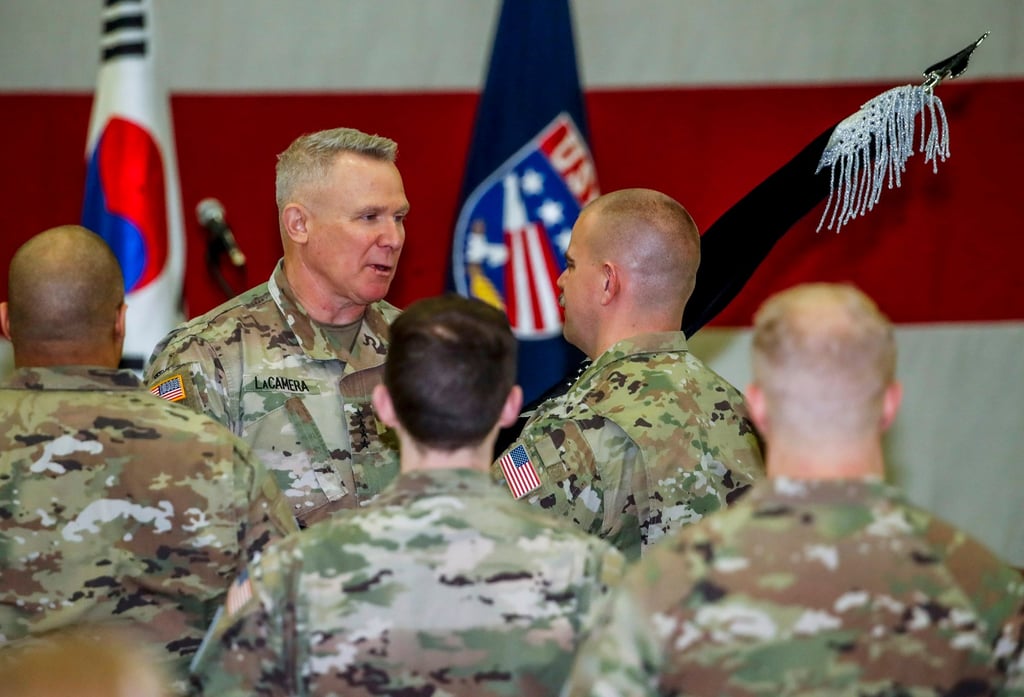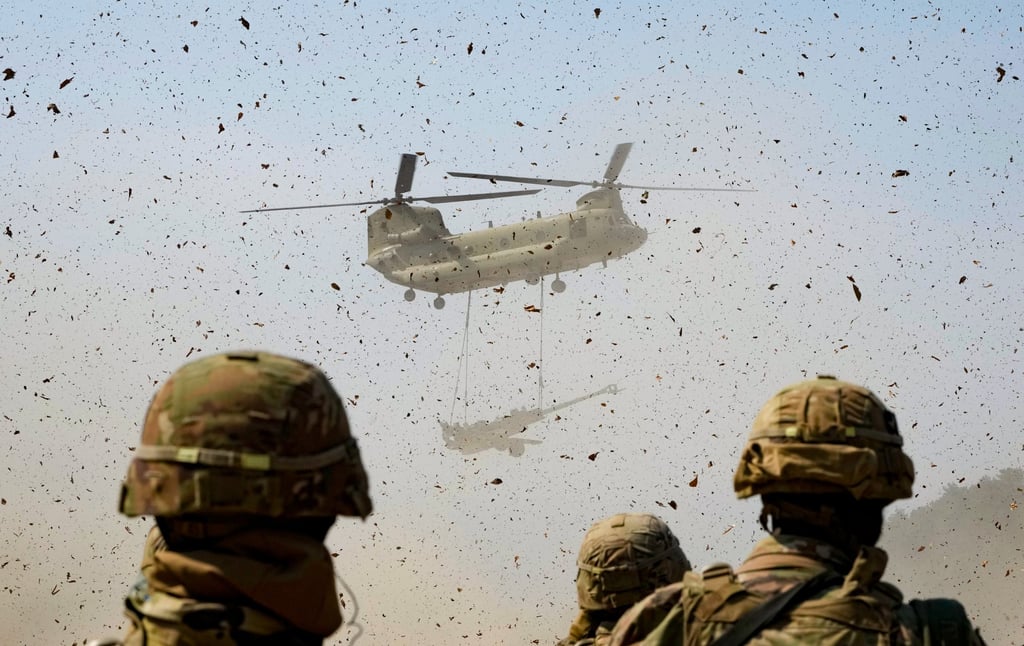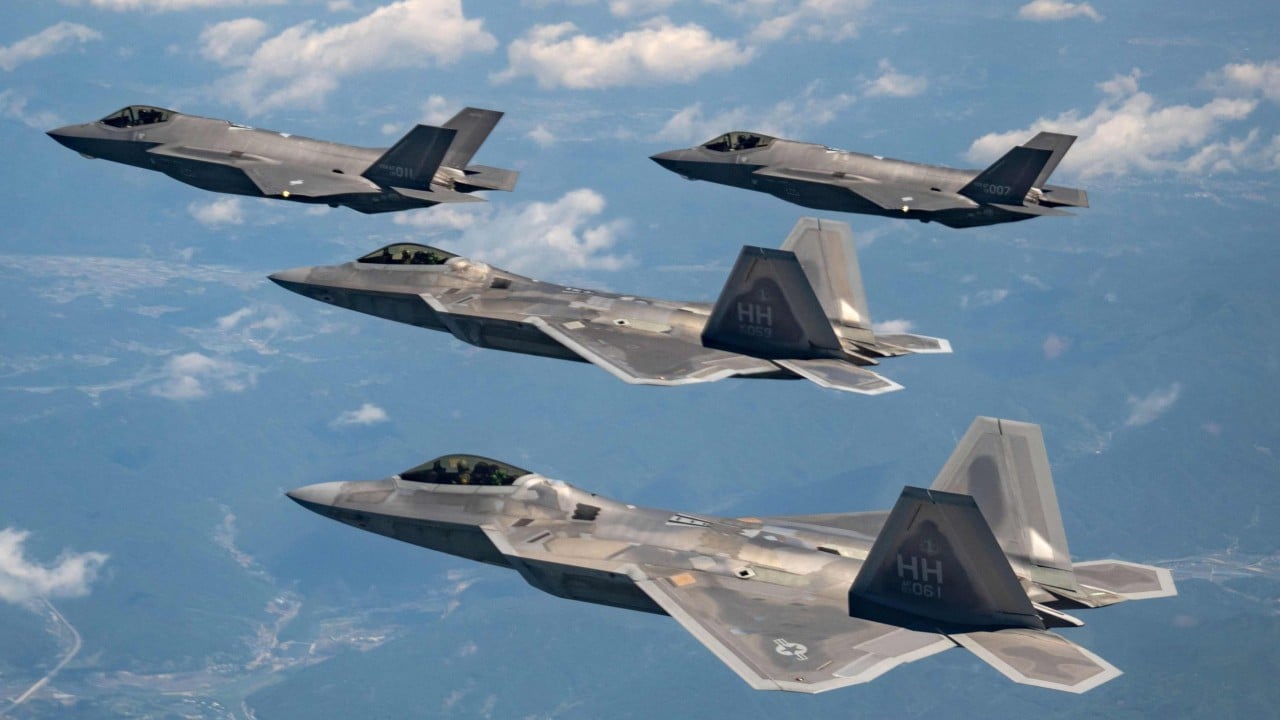The gap in how Seoul and Washington perceive the role of deployed US forces became more evident this week with an American commander’s suggestion that threats faced by South Korea extended beyond Pyongyang, hinting at the spectre of China.
General Paul LaCamera, commander of US Forces Korea (USFK), on Wednesday stressed the 1953 mutual defence treaty between the allies did not specify a single adversary, adding that his troops were prepared to defend South Korea against “all threats”.
His comments come amid increasing narratives in Washington about South Korea’s role in addressing not only threats from North Korea but also other global challenges.
There are also suggestions that the roughly 28,500 US troops stationed in South Korea should contribute to deterring China.
“It’s not just DPRK (North Korea) that threatens the Republic of Korea (South Korea),” LaCamera was quoted by local South Korean media as saying at an online forum in Washington. He was responding to a question on the growing calls in Washington for US forces deployed there to shift their focus to potential Chinese threats.
Article III of the treaty states that each party declares that an armed attack “in the Pacific area on either of the parties” would be dangerous to its own peace and safety, and each side should “act to meet the common danger”.
Article IV indicates that South Korea grants the US the right to deploy land, air or sea forces on its territory “as determined by mutual agreement”.

Kim Joon-hyung, an opposition lawmaker who served as the head of the National Diplomatic Academy, said the expansion of the USFK’s roles beyond the Korean peninsula might cause the South to be dragged into a conflict over Taiwan.
It was “remarkable” that a top US military leader had “so openly” said it was not just the North that presented a threat, he told This Week in Asia.
“The United States is eager to integrate South Korea in its efforts to push through with its global strategy,” said Kim of the splinter opposition group Rebuilding Korea Party.
Furthermore, a new military command structure was announced on Sunday by Washington and Tokyo involving US Forces Japan, which will reportedly work more closely with Japanese troops under a Joint Force Headquarters reporting to the commander of US Indo-Pacific Command.
This development suggests that Japanese troops could potentially intervene in conflicts on the Korean peninsula and in the Taiwan Strait, a significant change that could impact the region, Kim said.
Kim said the US-Japan move was modelled after the US-South Korea Combined Forces Command and designed to counter China’s influence in the Indo-Pacific.
The group would have a commanding right over South Korea’s half-million troops if a war breaks out on the Korean peninsula.
The three countries in Tokyo last month signed the Trilateral Security Cooperation Framework that would usher in “security cooperation”, joint exercises and stability on the Korean peninsula, “in the Indo-Pacific region, and beyond”.

Kim and other opposition lawmakers are gathering signatures to pass a parliamentary resolution by the end of the year to “help the government fend off” mounting American demand for the South’s interventions in global challenges such as those over the Taiwan Strait or the war in Ukraine.
Lee Il-woo, a senior researcher at the Korea Defence Network, said South Korea faced double threats from Pyongyang’s nuclear arsenal and China’s missiles in Shandong and Liaoning provinces aimed at the South’s western coast.
China and Russia also on occasions flew their military aircraft threateningly close to the South’s air space, he noted. “Indeed, there exists a serious gap between Seoul and Washington in their perceptions concerning threats to the Korean peninsula.”
Seoul did not want to “grate on China” by highlighting threats from its largest trade partner, he said.
General LaCamera’s remarks came ahead of the twice-a-year massive US-South Korea military exercises that will reportedly take place from August 26-29, following a multi-domain trilateral exercise “Freedom Edge” with Japan in June.
Han Ki-bum, a researcher at the Asan Policy Institute, said the North was likely to respond with its own military drills including short-range or middle-range missile launches, but it would save its remaining cards – an ICBM test or its seventh nuclear test – for when the US presidential election in November is over.


